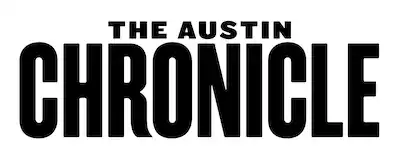https://www.austinchronicle.com/news/2003-07-11/167746/
Mapping 'Political Apartheid'
On The Lege
By Mike Clark-Madison, July 11, 2003, News
Right now, Texas has 20 congressional districts carried by GOP statewide candidates in 2002 and 11 majority-minority districts. The map passed on Tuesday by the full House has 20 districts carried by GOP candidates in 2002 and 11 majority-minority districts. So much for Tom DeLay's goal of electing "more Republicans and minorities to Congress."
Here on this planet, it's always been clear that the Bug Man is full of it -- if you elect more minorities, you elect more Democrats, Q.E.D. All 20 of the state's GOP districts, both today and on the House map, are majority-white and are held by white people. The one Republican of color -- Henry Bonilla (Dist. 23) -- represents a Democratic district (though a competitive one). The only Dem district that isn't majority-minority is our own Dist. 10; it's only 40% black and Hispanic. (By the next census, Dist. 10 will surely be majority-minority and perhaps majority-Hispanic.) DeLay's pique that white reps -- Lloyd Doggett, Chris Bell, Gene Green, and Martin Frost, the Four Horsemen of his Apocalypse -- represent nonwhite districts would better be addressed in therapy, not in the Legislature.
The only Dem district to be substantially altered in the House map is Chris Bell's Dist. 25 in Houston. (Frost and Green have been drawn out of their districts, but they can move.) Dist. 25 today is just under 60% non-Anglo, the larger portion being Hispanic, and becomes 70% minority, the larger portion being black. Despite what you hear, there are no "majority-black" districts in Texas -- the closest ones are 40.3% African-American. That's good enough for the Voting Rights Act, and the new Dist. 25 may indeed keep Bell -- a freshman who beat an African-American candidate in the 2002 primary -- from winning re-election.
But by making Dist. 25 more black, the House has also made it solidly Democratic. Right now, Texas has four swing districts, only two of which remain on the House map -- Bonilla's Dist. 23 and Solomon Ortiz's Dist. 27. The House GOP leaders have traded Bell's district for Nick Lampson's Dist. 9, which today is competitive but which is stripped of most of its black voters (and Lampson) on the new map, and thus becomes hardcore GOP. This appears to be the one place where the House map is flirting with outright VRA disaster -- the recent Georgia v. Ashcroft Supreme Court decision at least suggests that minority-influenced districts may require protection.
On our map, the line between "safe" and "solid" districts is a fine one -- several GOP seats missed our threshold (a 2-to-1 margin of victory for statewide candidates in both 2000 and 2002) by only one or two points. But if we had drawn our map to illustrate racial split rather than partisan split, it would look almost identical. The three solid Dem seats are the black seats. The softer GOP seats are the ones with more minority voters -- like the new Dist. 1 in East Texas, or DeLay's Dist. 22 in Fort Bend Co. The softer Dem seats are the ones with more Latino voters, because Latino turnout is lower. The border seats with the most white voters are the two swing districts. Simple as that.
Elsewhere, CSHB 3 just pushes Blue Dogs -- those Democrats who are now being rewarded for their fealty to George W. Bush -- around the map to make them vulnerable. The best revenge, of course, would be for the Dems to still triumph at the ballot box -- which is not inconceivable, since the Blue Dogs already prevail in what have long been GOP districts. Either Max Sandlin or Jim Turner (both now paired in Dist. 1) will have to go, but the other (probably Sandlin) can stay, and Lampson might have a chance in the new Dist. 4, which includes Beaumont. Meanwhile, 22-year-vet Charlie Stenholm of Abilene could wipe the floor of the new Dist. 19 with "incumbent" Randy Neugebauer of Lubbock, who only got elected last month. And Chet Edwards need only move across Waco to run in a vacant district (Dist. 17) that includes his beloved Fort Hood. Assuming 80-year-old Ralph Hall retires rather than runs against Pete Sessions in Dallas, that gives the R's a pickup of exactly two seats -- the new Dist. 2 along the Red River and the new Dist. 11, which fulfills the real important goal of re-redistricting: creating a district for Midland (R-Tom Craddick).
The map adopted by the Texas House on Tuesday:
Adds no new GOP-opportunity districts (there are still 20);
Adds no new majority-minority districts (there are still 11);
Makes one district -- Dist. 25 in Houston -- more minority (and thus Dem) than it already was
Makes one district -- Dist. 9 in Southeast Texas -- more Republcian (and thus Anglo) than it already was
Moves the lines around in GOP territory to make life difficult for Democratic incumbents.
Under this map, here's how the congressional districts would break down:
3 Rock-solid Democratic
7 Safe Democratic
2 Swing districts, both leaning Democratic
11 Safe Republican
9 Rock-solid Republican
Assuming each district votes its party preference, six Democratic incumbents (and one Republican) would lose their seats in 2004.
Copyright © 2025 Austin Chronicle Corporation. All rights reserved.
